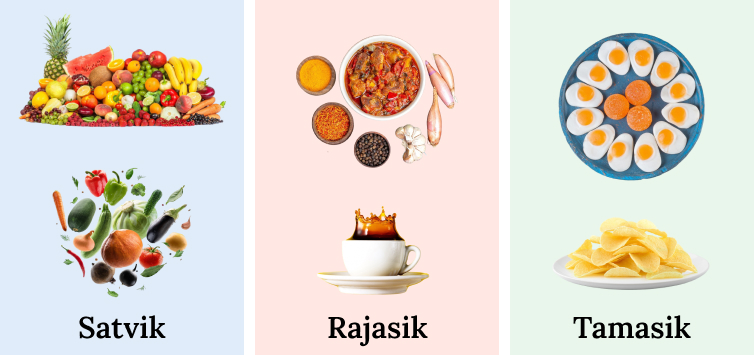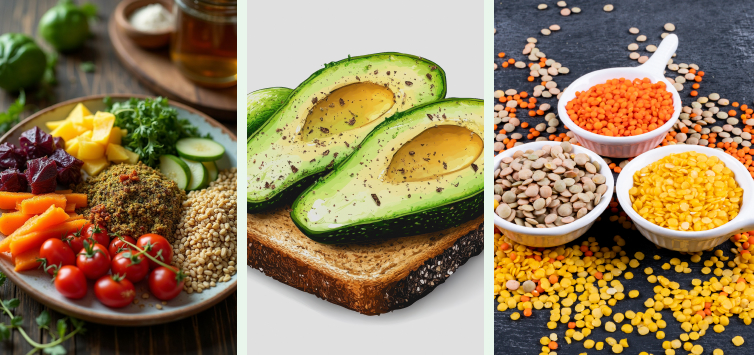Blog
Expert insights for your well-being journey. Your health is our priority.
Discover the Power of Ayurvedic Nutrition for Optimal Well-Being
“When diet is wrong, medicine is of no use. When diet is correct, medicine is of no need.”
This simple yet profound saying captures the essence of Ayurveda, which teaches us that food is not just fuel; it’s a powerful tool for health and healing.
By embracing Ayurvedic wisdom, we can transform our eating habits and, in turn, enhance our overall well-being.
In this blog post, we will delve into the connection between food and well-being through the lens of Ayurveda. We will also uncover practical nutritional insights that can enrich our lives.
So, without further ado, let’s dive in!

The Ayurvedic Principles of Food
At the heart of Ayurvedic nutrition are three qualities known as Gunas: Sattvic, Rajasic, and Tamasic. Understanding these qualities can guide us in making healthier food choices:
- Sattvic Foods: These are pure and nourishing foods that promote clarity and energy. Examples include fresh fruits, vegetables, whole grains, and nuts—foods that uplift both body and mind.
- Rajasic Foods: These foods are stimulating and can boost energy but may lead to restlessness if consumed in excess. They include spicy dishes and certain proteins.
- Tamasic Foods: These are heavy and often processed foods that make us feel sluggish. Examples include refined sugars and junk foods.
By focusing on Sattvic foods and being mindful of Rajasic and Tamasic options, we can create a balanced diet that supports our overall health. Ayurveda emphasizes that food is medicine, which is vital in healing physical ailments and emotional challenges.
Choosing fresh, seasonal, and locally sourced ingredients helps us connect with nature and enhance our vitality.

The Link Between Food and Doshas
In Ayurveda, each person has a unique constitution defined by three doshas: Vata, Pitta, and Kapha. Each dosha has specific characteristics that influence dietary needs:
- Vata Diet for Stability: Vata individuals benefit from warm, oily foods like cooked grains and avocados, which help counterbalance their naturally dry qualities.
- Pitta Diet for Coolness: To soothe the fiery nature of Pitta, cooling foods such as cucumbers, melons, and leafy greens are recommended.
- Kapha Diet for Lightness: Kapha types benefit from light and stimulating foods like legumes and spicy dishes that aid digestion.
Understanding our dosha and adjusting our diets accordingly, can promote better health.
Food and Digestive Health: Agni (The Digestive Fire)
A key concept in Ayurveda is Agni or digestive fire. Agni is essential for digestion, metabolism, and even emotional well-being. A strong Agni allows us to absorb nutrients effectively, while a weak Agni can lead to health issues.
Signs of a strong Agni include regular hunger cues and easy digestion. If you experience bloating or sluggishness, it may indicate a weakened state. To support Agni, Ayurveda suggests using spices like ginger, turmeric, and cumin in your meals. These spices not only add flavor but also help stimulate digestion.
The Importance of Meal Timing in Ayurveda
Timing your meals is another important aspect of Ayurvedic dietary guidelines. Eating during “Pitta time” (10 a.m. – 2 p.m.) when Agni is strongest helps maximize digestion. Regular meal intervals keep your energy levels steady while preventing overeating or excessive snacking.
Fasting also plays a significant role in Ayurveda; it allows your digestive system to rest and rejuvenate. Intermittent fasting can help restore balance among the doshas while promoting overall health.
Mindful Eating and Its Connection to Wellbeing
Mindful eating is an essential practice in Ayurvedic nutrition. It encourages us to fully engage with our meals by paying attention to taste, texture, aroma, and appearance. Creating a calm environment during meals enhances digestion and nutrient absorption.
Additionally, being aware of the emotional aspects of food can lead to healthier eating habits. Recognizing emotional triggers related to food helps us develop a more balanced relationship with what we eat.

Food and Longevity: How Ayurveda Promotes Healthy Aging
Ayurveda focuses on immediate health benefits and emphasizes longevity through specific dietary choices. Anti-aging foods like ghee (clarified butter), almonds, fresh vegetables, and herbs nourish the body while supporting vitality.
The concept of Ojas, or life essence, highlights how our food choices impact our overall energy levels. Eating nourishing foods boosts Ojas, contributing to longevity and well-being.
Conclusion
Incorporating Ayurvedic principles into our daily lives helps us build a harmonious relationship with food that aligns with individual needs.
FAQs:
Q: What is the best Ayurvedic diet for beginners?
A: For beginners, it is best to start with whole, fresh foods that align with your dosha. Focus on seasonal produce and gradually incorporate Ayurvedic spices for added health benefits.
Q: How do I know my dosha and choose the right foods?
A: You can determine your dosha by consulting an Ayurvedic practitioner or using online quizzes that assess your physical traits and tendencies to suggest suitable foods.
Q: Can Ayurveda help with chronic digestive issues?
A: Yes, Ayurveda offers personalized dietary guidelines and herbal remedies to address specific digestive issues. These natural methods aim to restore balance and improve overall digestive health.
Q: How do Ayurvedic diets promote mental clarity?
A: Ayurvedic diets emphasize Sattvic foods that nourish the mind and body while minimizing Tamasic influences. This approach enhances mental clarity, focus, and emotional stability over time.
Statistics Reference: